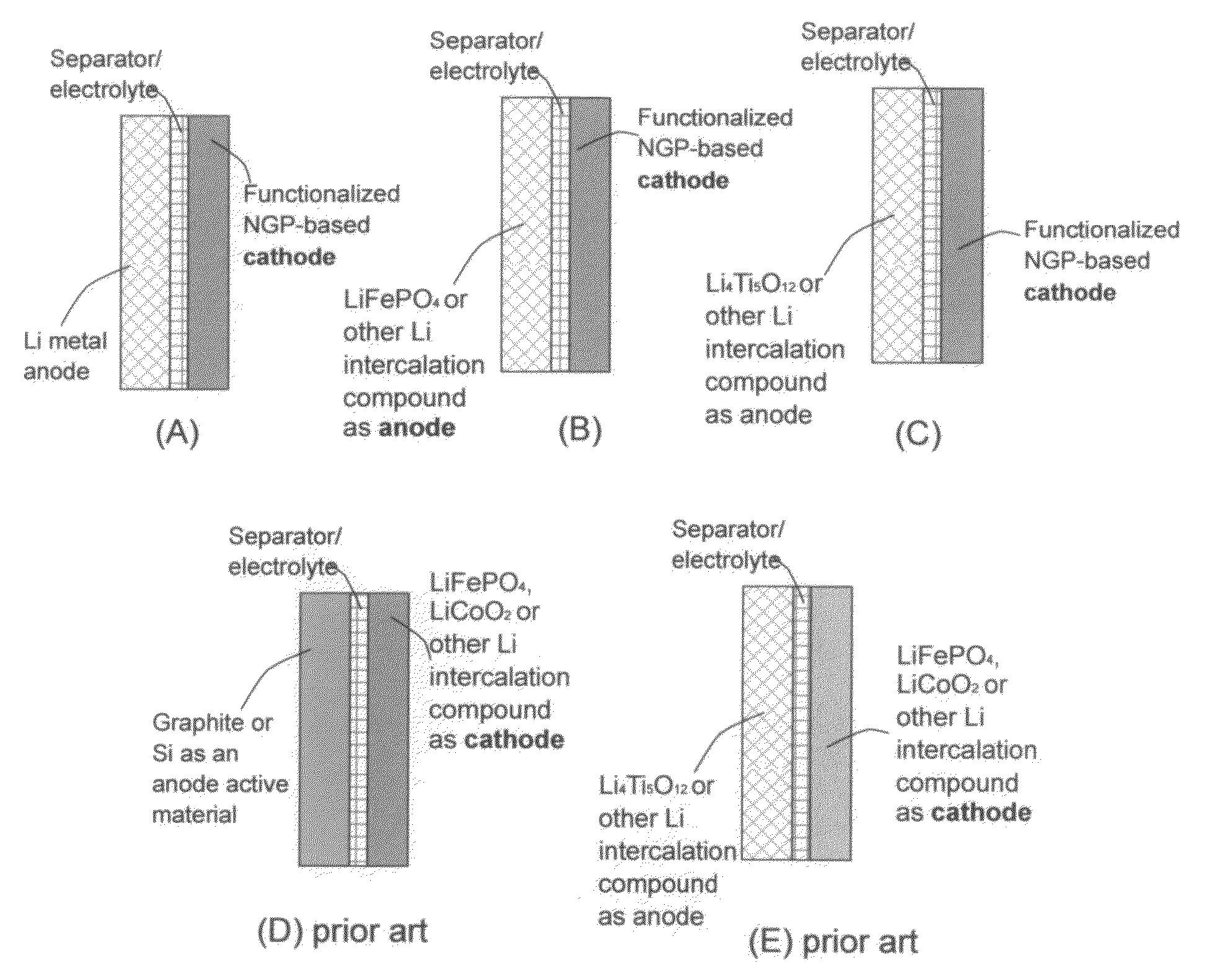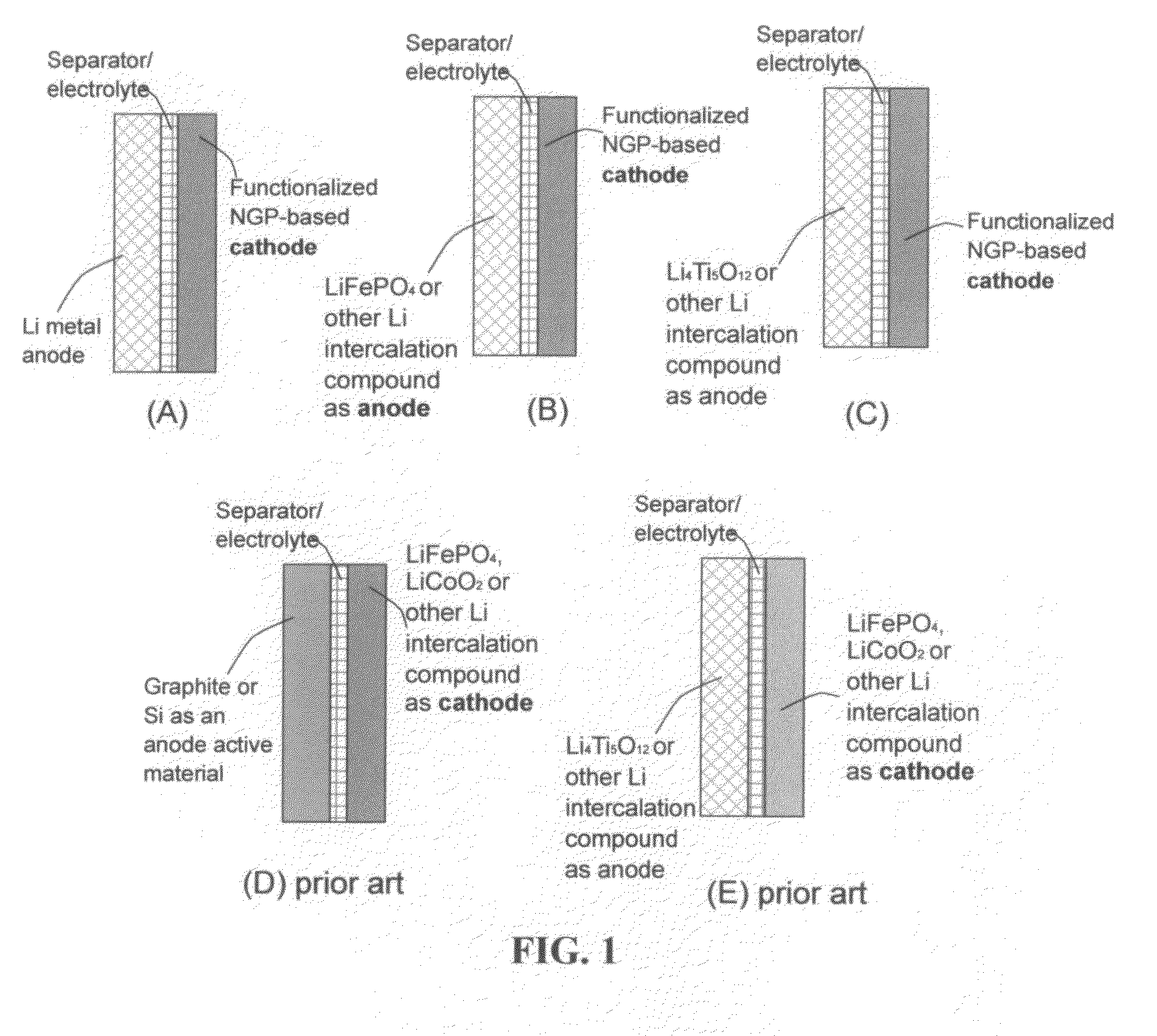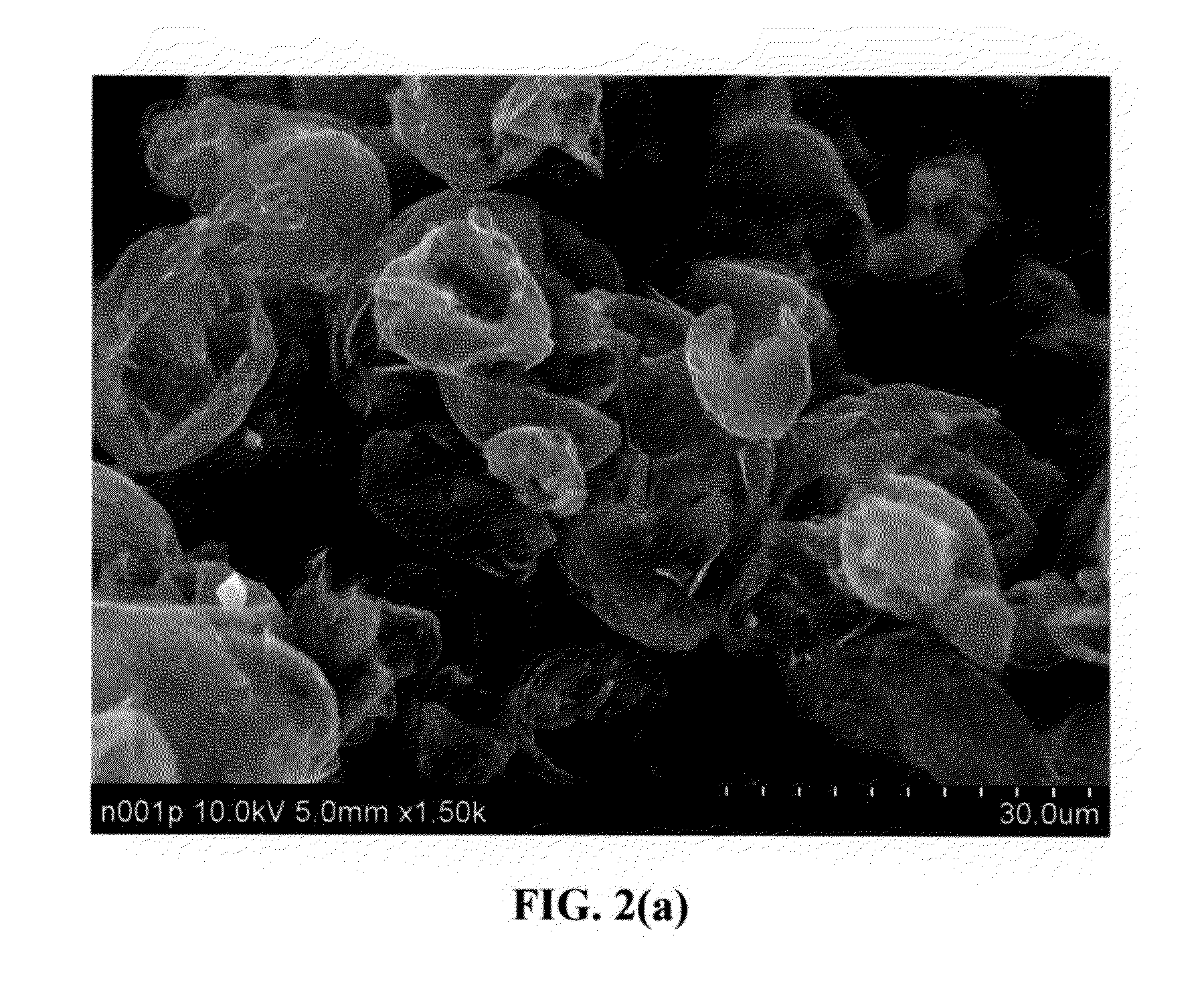Lithium super-battery with a functionalized nano graphene cathode
a nano graphene cathode and super-battery technology, applied in the direction of electrochemical generators, cell components, transportation and packaging, etc., can solve the problems of requiring re-charge typically hours, delivering a very low power density (100-500 w/kg), and many technological barriers to widespread implementation of super-capacitors
- Summary
- Abstract
- Description
- Claims
- Application Information
AI Technical Summary
Benefits of technology
Problems solved by technology
Method used
Image
Examples
example 1
Functionalized NGPs from Carbon / Graphite Fibers
[0078]Continuous graphite fiber yarns (Amoco P-55) were cut into segments of 5 mm long and then ball-milled for 24 hours. Approximately 20 grams of these milled fibers were immersed in a mixture of sulfuric acid, nitric acid, and potassium permanganate at a ratio of 4:1:0.052 at 30° C. for 48 hours. Following the chemical oxidation / intercalation treatment, the resulting intercalated / oxidized fibers were washed with water and dried. The resulting product is an acid-intercalated / oxidized graphite fiber material containing graphite oxide crystallites.
[0079]Subsequently, approximately ½ of the intercalated or oxidized fiber sample was transferred to a furnace pre-set at a temperature of 850° C. for 30 seconds. The compound was found to induce extremely rapid and high expansions of graphite crystallites. The as-exfoliated graphite fiber is designated as Sample-1a. Approximately half of Sample 1-a material was dispersed back to the mixture of...
example 2
NGPs from Sulfuric Acid Intercalation and Exfoliation of MCMBs
[0083]MCMB 2528 microbeads (Osaka Gas Chemical Company, Japan) have a density of about 2.24 g / cm3; a median size of about 22.5 microns, and an inter-planar distance of about 0.336 nm. MCMB 2528 (10 grams) were intercalated with an acid solution (sulfuric acid, nitric acid, and potassium permanganate at a ratio of 4:1:0.05) for 24 hours. Upon completion of the reaction, the mixture was poured into deionized water and filtered. The intercalated MCMBs were repeatedly washed in a 5% solution of HCl to remove most of the sulphate ions. The sample was then washed repeatedly with deionized water until the pH of the filtrate was neutral. The slurry was dried and stored in a vacuum oven at 60° C. for 24 hours. The dried powder sample was placed in a quartz tube and inserted into a horizontal tube furnace pre-set at a desired temperature, 600° C. for 30 seconds to obtain Sample 2-a. Approximately one half of the exfoliated MCMB sam...
example 3
Oxidation, Exfoliation, Separation, and Further Functionalization of Natural Graphite
[0084]Graphite oxide samples were prepared by oxidation of graphite flakes with sulfuric acid, sodium nitrate, and potassium permanganate at a ratio of 4:1:0.05 at 30° C. for 12 hours, 24 hours, 48 hours and 96 hours, respectively. Upon completion of each reaction, the mixture was poured into deionized water and filtered. The sample was then washed with 5% HCl solution to remove most of the sulfate ions and residual salt and then repeatedly rinsed with deionized water until the pH of the filtrate was approximately 7. The intent was to remove all sulfuric and nitric acid residue out of graphite interstices. The slurry was dried and stored in a vacuum oven at 60° C. for 24 hours. The interlayer spacing of the resulting laminar graphite oxide was determined by the Debey-Scherrer X-ray technique to be approximately 0.55 nm, 0.57, 0.67 nm, and 0.73 nm (7.3 Å), respectively, indicating that graphite has b...
PUM
| Property | Measurement | Unit |
|---|---|---|
| thickness | aaaaa | aaaaa |
| thickness | aaaaa | aaaaa |
| thickness | aaaaa | aaaaa |
Abstract
Description
Claims
Application Information
 Login to View More
Login to View More - R&D
- Intellectual Property
- Life Sciences
- Materials
- Tech Scout
- Unparalleled Data Quality
- Higher Quality Content
- 60% Fewer Hallucinations
Browse by: Latest US Patents, China's latest patents, Technical Efficacy Thesaurus, Application Domain, Technology Topic, Popular Technical Reports.
© 2025 PatSnap. All rights reserved.Legal|Privacy policy|Modern Slavery Act Transparency Statement|Sitemap|About US| Contact US: help@patsnap.com



